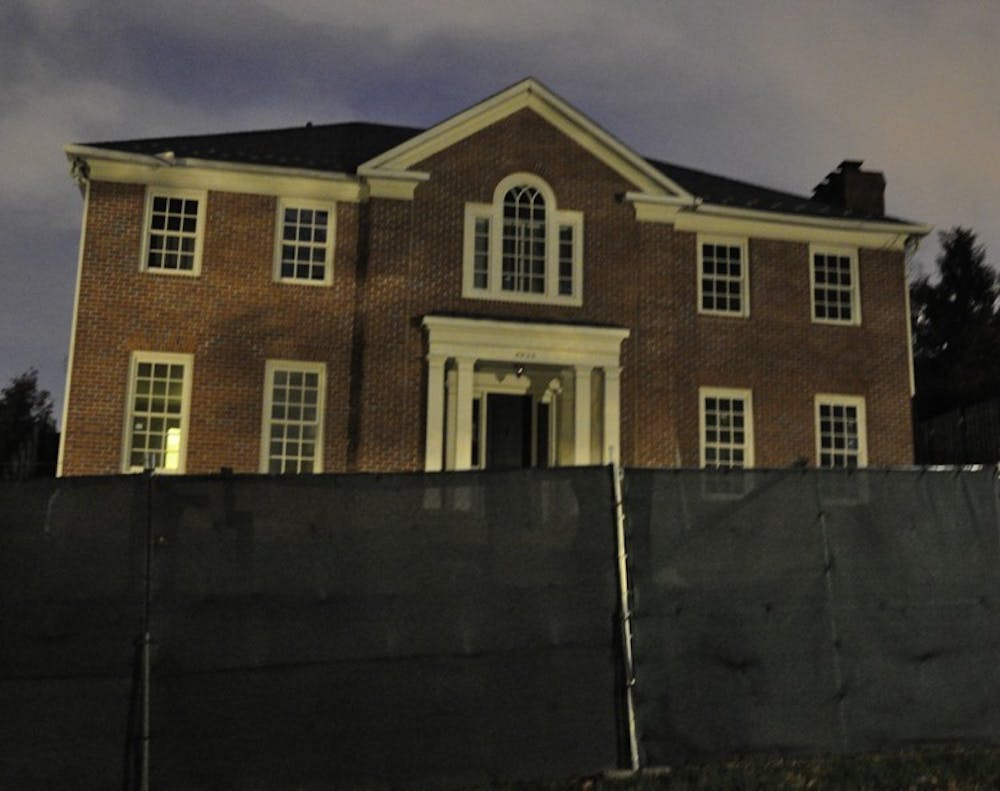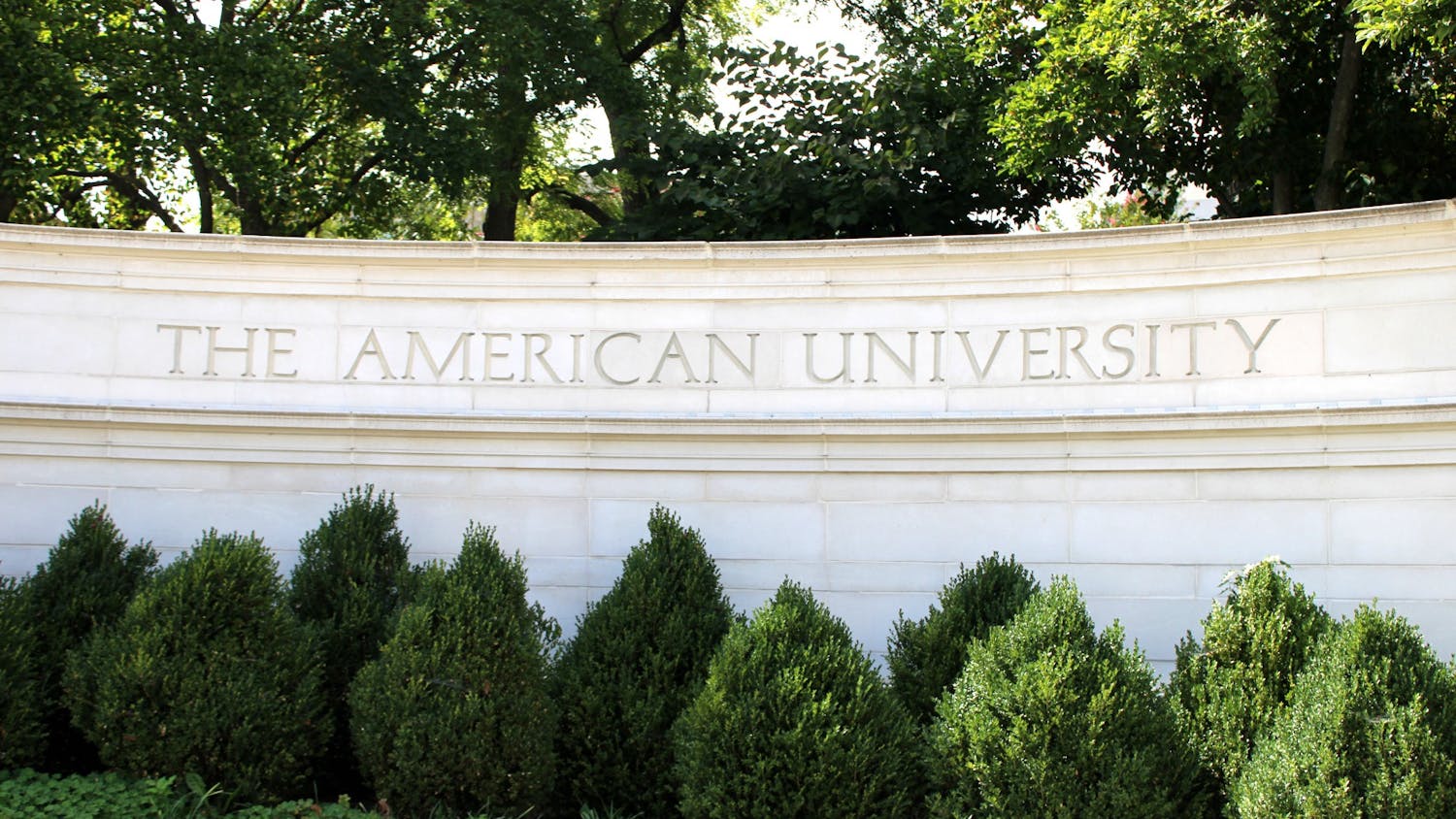The U.S. Army Corps of Engineers will extend cleanup efforts on World War I era chemical munitions buried on AU property at 4825 Glenbrook Road to the summer of 2017.
Returning 4825 Glenbrook Road, located adjacent to Jacobs Field, back to the University was delayed from spring of 2016 to summer of 2017 largely because of the weather, said Steven Hirsh, the EPA remedial project manager for the Washington, D.C., munitions site of Spring Valley.
“Working in the summer is difficult,” Hirsh said. “Heat stress significantly reduces the amount of time a worker can remain in the protective equipment needed during operations in the filtered air shelter.”
The air-filtering tent and protective gear trap heat. The U.S. Army Corps of Engineers are working under both to remove concrete footings and retaining walls from the house at 4825 Glenbrook Road, which was demolished in November 2012, The Eagle previously reported.
The retaining walls and footings were larger than expected, which increased the time that workers must be in protective gear as well as the amount of debris that must be disposed, Hirsh said by email.
The removal of the front retaining wall footer also damaged the driveway of the property. The U.S. Army Corps of Engineers uses the driveway to load and transport material off the property, which caused a further delay for repair, according to notes 2014 RAB Package.pdf from the AU Restoration Advisory Board Meeting on July 15.
“Removing the concrete and preparing it for disposal [has] taken much longer than anticipated,” Hirsh said by email.
Arsenic is also being removed from the soil surrounding the 4825 Glenbrook Road home, but its removal has not been a factor in the schedule changes, Hirsh said by email.
The cleanup at 4825 Glenbrook Road is part of an effort by the U.S. Army Corps of Engineers to remove arsenic contaminated soil and buried WWI munitions from D.C.’s Spring Valley neighborhood, including portions of AU’s campus. Spring Valley is classified as a Superfund site, which is an “uncontrolled hazardous waste” location, according to the EPA.
Safety systems have been, and continue to be, in place to protect the campus community from any chemicals that may become airborne. There have been no documented student injuries from the U.S. Army Corps of Engineers’ work in the archived records of the cleanup process.
Courtesy of Google Maps
Looking ahead to 2017
The next phase of the remediation process will include moving the protective tent to the property’s backyard from August to October. The U.S. Army Corps of Engineers will only do work that has a low-probability of unearthing chemicals or other materials during this time, and high-probability work will resume in November when the tent has been secured, according to notes from the Restoration Advisory Board Meeting on July 15.
High-probability excavation of the property is projected to continue through the winter of 2016 or 2017, according to notes from the Restoration Advisory Board Meeting on July 15.
The final phases of low-probability work will be completed between the winter and spring of 2017, and site restoration will take place from the spring of 2017 to the summer of 2017, according to the Restoration Advisory Board Meeting July 15 notes.
The University will make no plans for the property’s use until after it has been returned by the U.S. Army Corps of Engineers and AU has conducted its own review of the land, said Camille Lepre, assistant vice president of university communication, in an email.
“The ‘new’ schedule announced by the Corps in July represents a very conservative estimate of how long the work will take if during the remaining work the Corps encounters situations similar to what has happened so far,” Hirsh said by email.
In the past, under the Glenbrook tent
4825 Glenbrook Road has undergone cleanup to remove buried chemical weapons developed in the AU Experimental Station, which was a 660-acre facility where chemical weapons were researched and tested in the early 1900s, according to the EPA’s Spring Valley webpage.
The U.S. Army Corps of Engineers began excavation at 4825 Glenbrook Road in October 2007, according to a Sept. 27, 2007 copy of President Neil Kerwin’s memo to the campus community.
Several of the uncovered munitions contain the chemicals lewisite, arsenic trichloride and mustard gas, The Eagle previously reported. These chemical agents cause blistering of the skin and mucous membranes, such as the eyes, and irritate the lungs, according to the Center for Disease Control.
Remediation efforts have been delayed several times for a variety of reasons, including funding, varying levels of arsenic found in soil samples and the discovery of several chemical munitions, according to the University’s archived updates.





